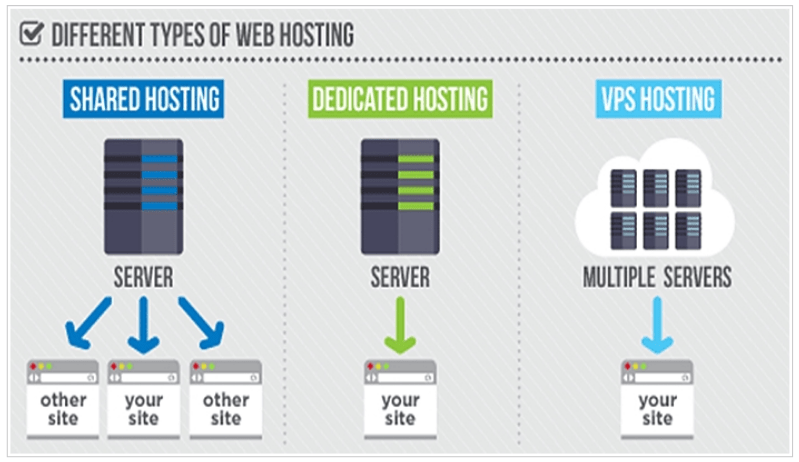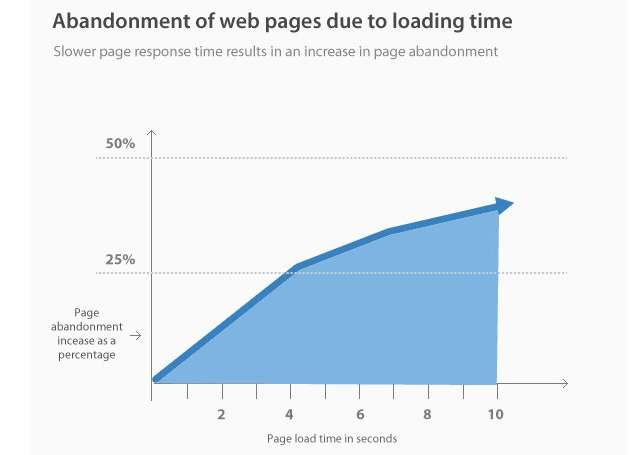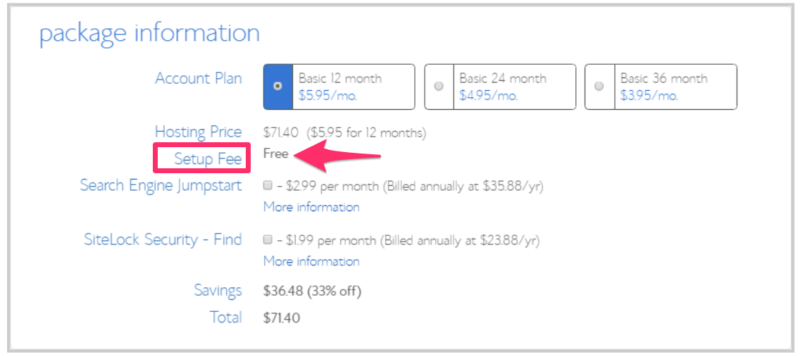Understand the price of web hosting and what to expect as you grow
Creating a website is exciting. In many cases, it means you’re starting or expanding your own business.
But in order for your website to be live on the Internet, it needs to be hosted. In short, web hosting provides storage space and access for websites.
So, you know you need it and you know you’ll need to consider the website hosting costs. Like anything else, the costs associated with hosting your website can influence some of your decisions.
Like nearly every other product and service, there isn’t one set for website hosting. There are even some hidden costs associated with site hosting that you need to be aware of.
Allow me to explain.
If you cut corners initially with site hosting costs, it can end up costing you more money down the road. You could run into issues that are more expensive than you might think.
I developed this guide to help educate you on how much website hosting will really cost. We’ll go through different elements that you need to take into consideration.
Types of Web Hosting
There are three main types of website hosting.
- shared hosting
- virtual private server (VPS)
- dedicated hosting
The costs vary based on which type of web hosting you use.

Shared hosting is the least expensive option. That’s because your site gets stored in a server that hosts other websites too. Dedicated servers are be the top of the line option — one that comes at a premium price. Just as the name implies, your site gets hosted on a single server you have all to yourself. (If you’re a small business, dedicated is likely way more than you need.) VPS hosting falls in between these two options. It’s less expensive than a dedicated server but has additional features and greater flexibility than shared hosting.
Free Website Hosting
What about free website hosting? Is it good? Do I recommend it?
These are questions that I get asked all of the time. For those of you who are interested in this, you check out this guide on the best free web hosting.
While free hosting is definitely an option you can consider, there is an old saying that you should keep in mind: You get what you pay for.
Now, this isn’t necessarily true all of the time. If you buy a $500 designer shirt, is it really that much better than a cheap $5 shirt? Probably not. But when it comes to web hosting, free or cheap isn’t always better.
So why do so many services offer free hosting packages? They are able to make money in other ways.
Some free hosting services make money from the banner ads displayed on your website, or even banners on your own dashboard. Some get paid with ads on forums that they force you to visit and post on in order to receive your free hosting. You’ll see web hosting plans that are offered free but then entice you to switch and upgrade to paid service.
You might even come across a startup company that’s running a web host for the first time, and offering free hosting before they transition and go after paying clients. This is something you’ll want to avoid for sure.
Website Traffic
It’s natural to try and save some money with a free or inexpensive hosting service. But eventually, your site is going to grow. Obviously, this is a good thing.
However, when your site reaches a certain size, the host may begin to throttle your website if you’re on a shared server.
A couple of things can happen from here. None are good news for your website.
It’s possible that website visitors will have trouble accessing your pages and content. They might even see error messages when attempting to connect to your site.
Even if an error message doesn’t appear, the increased load time will cause people to bounce. That’s a major problem. As loading times increase, page abandonment increases as well.

Slow loading times are extremely costly. 40% of people abandon websites that take more than three seconds to load. 80% of people who leave your site because of slow speed say that they won’t return.
This is extremely costly for your website, so make sure you understand the basic principles that boost your website loading time. Upgrading and paying more for your web hosting can save you thousands of dollars in lead generation, customer acquisition costs, and sales.
Security
Reliable websites need to be secure. Safety always needs to be a top priority for your business.
This is especially true if you’re processing payments. Think about all of the sensitive information that your website has on it. It’s your responsibility to protect your site visitors and customers from cybercriminals and malicious attacks.
Here are just some of the minimum security measures that you need to keep in mind.
- spam filtering
- security audits
- firewall configuring
- network protocols
- scans for malware and viruses
- passwords
- multi-level authentication
- user permissions
A popular security option is a secured cloud where you can store all of your documents and manage files. However, all of this costs money.
But if you pay for a reliable web hosting service, you can get all of these features included as part of your subscription. This is much better than having to pay for them individually, or even worse, pay the costs of your website getting compromised or having security problems.
Servers
You need to make sure that your site hosting servers are reliable as well. Read reviews and do your research before you sign up for any hosting service based on attractive pricing alone.
The best servers have updated software, 24/7 monitoring, regular maintenance, and automatic updates.
Earlier we talked about the different types of web hosting. Your server will depend on which option you choose.
It’s worth mentioning that the size of the dedicated hosting market across the world is growing each year.

Does this mean you need to have a dedicated server? Not necessarily.
Your website will perform better if you do, but depending on the size of your site right now, it’s not completely necessary.
But if you decide to upgrade or change your server at some point in the future, there will be additional costs associated with that transition, including some possible down time on your site.
Operational Costs
I consult with lots of business owners who just want to host their website on their own. They have a technical background and don’t think it will be a problem.
But just because you have the ability to self-host, doesn’t mean that you should. I’m not saying this to discourage you, but I don’t want to see you have to deal with hidden or unexpected costs.
You’ve got a business to run. Hosting your own website shouldn’t take away from your daily business tasks.
If you pay for a web hosting service, you’ll benefit from things like servers, bandwidth, storage, automatic updates, maintenance, and data migrations. Do you really want to have to worry about all of this?
Let a hosting provider do all of the heavy lifting for you. Hosting a site on your own can increase your operational costs. It will take time out of your day, and you may even need to hire more people. This is an inefficient use of your resources.
Instead, I’d recommend just finding the right hosting provider from the beginning. Then you can focus your efforts on running your business and avoid unexpected costs.
Renewal and Setup Fees
When you first purchase web hosting, the price might seem great. But that is likely just your initial cost for signing up.
The promotional rates aren’t usually the final price and probably won’t last forever.
Make sure you read the fine print to see what your renewal costs will be. Whether that’s next month, next year, or three years down the road. In most cases, there is no way around the price jump, but you should be ready for it.
Eventually, you should be expecting to pay full price. This will likely come when you renew.
Some services will also charge you for a setup fee.

In the example above, the setup fee is free. But this isn’t always be the case.
For those of you who are paying for dedicated servers, the setup cost is definitely justifiable. That’s because your provider may need to physically add hardware components and set up software that you requested.
Conclusion
Hosting is a requirement for every website. There are lots of different options for you to consider.
The costs vary depending on which route you choose. Some options are more expensive than others. You may even decide to look for free website hosting.
Regardless of your decision, there will be some hidden costs that you need to be prepared for. A plan that saves you money up front could cost you extra down the road with your website traffic, operational costs, and security. Be prepared for additional fees associated with renewals and setups as well.
It’s important to make sure that you’re always using a reputable host.
If you still have questions about the costs associated with website hosting, you can ask me about it in the comments section, and I’ll be happy to help you out.
How much are you planning to pay for website hosting?
Source Quick Sprout http://bit.ly/2CuBhgD
